Technology has given us saws powered by gas, electricity and even batteries but sometimes you just need a classic hand saw to get the job done.
There are a variety of saws with different blade thicknesses and lengths, as well as different tooth patterns, so it’s just a matter of determining which hand saw has the features you need.
Here’s a quick primer on the seven most popular hand saws and why you might want to choose one over another for your next project …
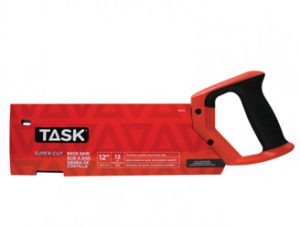
The Tool Box Saw:
Tool Box saws come in a variety of sizes and are primarily used for sawing wood. They generally have 8-10 teeth per inch and their hard point teeth increase cutting accuracy and the life of the saw edge.
Task’s Barracuda Tool Box Saws have the advantage of teeth in both directions making cutting 50% faster.
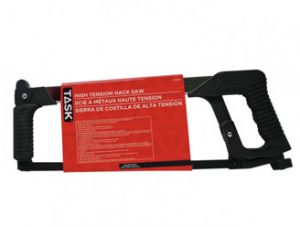
The Hacksaw:
Hacksaws are used mostly for cutting metal, wire, cables, and plastic. They have very fine teeth and slim blades. Look for a hack saw with a hand guard to protect your knuckles while you’re working with it.
Task’s 12” bow hacksaw has a quick-release blade system that makes it faster to swap your blades and they also make a high-tension hacksaw with three blade positions for tough jobs. If you find you’re regularly breaking hacksaw blades, Task has a neat mini hacksaw that allows you to refuse those broken blades and cut in tight areas.
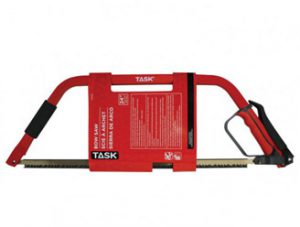
The Bow Saw:
You might reach for the bow saw if you’re cutting green or wet wood because it’s designed not to get clogged. Task’s bow saws have hardened and tempered steel blades that stay sharp longer than the competition and their heavy-duty rectangular steel frame makes them strong and durable. They’re a great choice if you’re cutting logs.
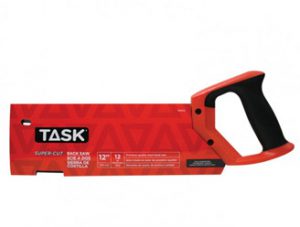
The Back Saw:
When you want a finer cut for a detailed project, a back saw’s smaller teeth and stiffening metal rib will give you more control than other saws. Back saws are great for moulding and trim work.
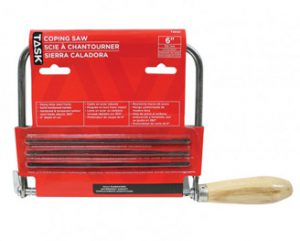
The Coping Saw:
Reach for the coping saw if you’re looking to cut curves, a highly detailed pattern, or sharp angles. It has a C-shaped metal frame so you can grasp two sections at once for a steady cut. Task’s coping saw has a slim carbon steel blade that adjusts 360 degrees for incredibly precise cuts.


